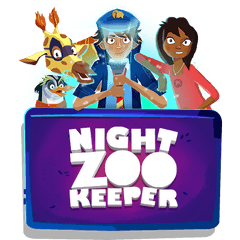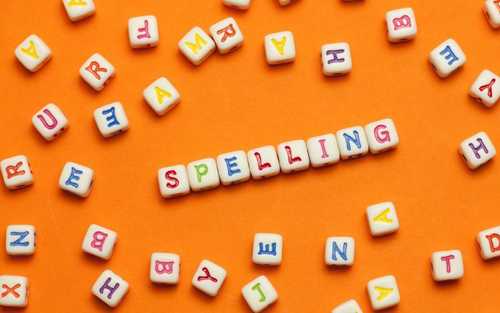Creative Games For Kids


While classic games such as Simon Says, Twister, and Tic Tac Toe are great fun, it’s always a good idea to introduce children to games that are educational, creative, and that help boost their skills.
Whether you’re looking for birthday party games or fun indoor activities to do on rainy days, these creative games will keep your child entertained for longer than any board game or card game - and they’re all educational!
Spelling Obstacle Course

The aim of this game is to combine the idea of an indoor obstacle course with spelling challenges, creating a fun learning activity for kids of all ages. Using household items, this DIY game will help your child improve their spelling skills while getting them to move!
Combining physical movement with spelling challenges boosts information-retention and creates cognitive connections between spelling and motor skills. The use of DIY and household items adds an element of creativity and resourcefulness to the learning process - make sure to get your child involved as you’re setting this game up!
How to play
To set up Spelling Obstacle Course, you’ll need some cardboard boxes, masking tape, pieces of paper, and empty water bottles.
First, lay out a course through your living room (you can also do this outside), using the cardboard boxes to create obstacles, and the masking tape to create different paths. Then, write different words in separate pieces of paper (use your child’s word lists for extra spelling practice), and add each piece of paper into an empty water bottle. Scatter them throughout the obstacle course, and start playing!
- Begin at the starting point of the course.
- As players navigate the course, they’ll encounter spelling challenges at each obstacle. These challenges may include spelling words aloud, unscrambling letters, or using the letters on the water bottle labels to form words.
- The course ends when all players successfully go through all obstacles and reach the finish line.
Age group differentiation
Younger Kids: For younger children, simplify the words and focus on basic spelling patterns. Ensure that the obstacles are also age-appropriate.
Older Kids: Introduce more complex words and spelling challenges. Increase the level of difficulty of physical activities to match the age group's capabilities.
Imagination Trail
The goal of this game is to improve motor skills, specifically focusing on balance, hand-eye coordination, and overall physical development in preschoolers and younger children, while boosting creativity and storytelling skills!
The use of a “balance beam” encourages children to refine their sense of balance, while hand-eye coordination is honed as they navigate the course. The interactive and playful nature of the game ensures that the learning process is fun and age-appropriate for younger kids.
How to play
Firstly, you’ll need to gather some masking tape and small toys or objects to be used in the game - these can be plush animals, small bean bags, books, ...
To set up this creative game, create a straight line on the floor using the masking tape - this will be used as the balance beam. After you’ve done this, place the small objects you gathered along the path you created with the masking tape. Then, have a brainstorming session with your child and come up with different storytelling challenges for each object you've set down. For example, if there's a lion plush toy on the path, you could prompt your child to tell a story set in a jungle!
- Have your child line up at the starting point of the balance beam.
- Get them to walk along the balance beam, picking up an object at each step and telling a short story based on it. Once they're done telling their story, get them to put the object they picked up in a basket at the end of the path.
- Introduce variations to make the game more challenging, such as walking backward, tiptoeing, or even balancing on one foot!
Age group differentiation
Preschoolers: Focus on a simple straight-line balance beam with larger toys for easier gripping. You can also make the game easier by giving your child more structured storvy prompts.
Younger Kids: Introduce a zigzagging path and smaller toys to challenge coordination and balance, and encourage them to use different story genres for each object they pick up.
Writing Chairs
Writing Chairs combines the thrill of musical chairs with a writing challenge, creating a fun and engaging activity for children.
This game encourages quick thinking, creativity, and writing skills as players try to compose a story or sentence when the music stops. It prompts children to express their ideas within a limited timeframe, boosting creative thinking skills.
How to play
For this fun game, you’ll need some chairs, a speaker or phone, and writing materials, such as paper, pens, whiteboards - whatever you have at home!
Arrange the chairs in a circle, just like you would set up a game of musical chairs. Make sure there is one less chair than the number of players.
- First, have all players gather around the chairs in a circle. Each of them should stand behind a chair with their writing materials ready.
- Start playing music and have all players walk around the chairs. When the music stops, each person must quickly take a seat and write a sentence or a short story prompt based on a specific theme or word picked by the game leader.
- The first person to complete a sentence or story prompt stays in the game, while the last person to finish takes a break from the circle.
- Take one chair away after each round and continue playing until only one person remains -they’ll be your creative writing champion!
Extra tips
- Be sure to change the writing theme or word for each round to keep the creativity flowing!
- Try out a round where players continue the story from the previous writer's sentence.
Book Charades
This game combines the classic and entertaining elements of charades with the world of literature, creating a fun indoor game that enhances reading comprehension, creativity, and family bonding.
By acting out scenes or characters from beloved books, players not only engage with different books in a hands-on way, but also improve their understanding of plot, characters, and themes. This family game turns reading into a dynamic experience, fostering a love for stories and encouraging shared laughter!
How to play
Gather a few different books from your own collection or from the library. These should be of different genres and difficulty level to keep the game exciting for the whole family. You’ll also need a timer or stopwatch.
- Have each family member choose a book from the collection without revealing the title to others.
- Players take turns acting out a scene, character, or plot element from their chosen book without using any words. For an easier game, the game master should determine the theme of the charades.
- Set a timer (1-2 minutes) for others to guess the book based on the charades performance.
- The player whose book is correctly guessed can share a little about the book, to encourage everyone to truly understand the meaning of the book being discussed.
- Continue taking turns until each family member has had a chance to act out scenes from their chosen books.
Extra tips
- When playing as a family, everyone’s ages will differ. Be sure to adjust the difficulty level of the books based on the age range of the players.
- For a more simplified version, you can pick a single book and get everyone to act out different scenes or characters from that book.
Puzzle Plot Creations

The main objective of this game is to motivate children to improve their creative writing and problem-solving skills through the assembly of story "puzzle pieces." This game is also a great tool to enhance storytelling skills and boost imagination!
Puzzle Plot Creations gets children to think critically about plot development, character interactions, and setting descriptions by providing different puzzle pieces that need to be connected correctly in order for a story to make sense.
How to play
To set up this creative game, you’ll need to create your puzzle pieces first. In different pieces of paper, write down different story elements, including characters, settings, conflicts, resolutions, plot twists, and more. The more pieces you create, the more stories can be written!
When your puzzle pieces are ready, lay them all out, ready to begin.
- Each player will choose a predetermined number of puzzle pieces (we recommend at least 5 pieces) without revealing them to others.
- Get all players to use their selected puzzle pieces to write a creative short story.
- Once everyone’s done writing, take turns sharing the stories with the rest group. Encourage your child to try out different genres and themes for extra learning!
- After each story, discuss how different puzzle pieces were used and why. Talk about what worked and what didn’t, and encourage constructive feedback.
- Get all players to swap puzzle pieces and repeat the process, creating new stories from different combinations.
Extra tips
- For a group project, get all players to combine their puzzle pieces to create a group story.
- Increase the difficulty by setting specific themes that players must have in their stories.
Hopscotch Spelling Challenge
The aim of this game is to use a classic outdoor activity to improve children's spelling skills. It makes spelling enjoyable while improving motor skills in a playful and interactive way.
Hopscotch Spelling Challenge incorporates the familiar hopscotch layout and introduces spelling elements, getting players to use both their minds and bodies to learn spelling patterns. The use of paper plates and plastic cups adds a creative dimension to this learning game.
How to play
For this game, you’ll need chalk or masking tape to mark the hopscotch grid, paper plates, plastic ups, a marker, and a few small objects.
First, draw the grid on the floor, and use the marker to write different letters or words on different paper plates. Place each plate on a different hopscotch square. Then, place the plastic cups at the end of the hopscotch grid to mark the scoring area.
- Ask all players to stand behind the starting line of the hopscotch grid.
- The first player grows a small object (like a beanbag) onto the hopscotch grid. They then hop through the grid, spelling the word or letter on each paper plate they land on.
- Players should avoid the square containing the small object. If their object lands on the same square or they step on a line, they lose a turn.
- The aim of the game is to reach the end of the grid, where players can try to throw their objects into one of the plastic cups in order to score extra points.
Extra tip
You can change up the game by using sight words, spelling patterns, or vocabulary words. Be sure to use words your child should recognize.
Story Seekers

This game sparks creativity, encourages teamwork, and makes hide and seek an engaging storytelling experience.
Story Seekers encourages children to be creative and work together to build a compelling story. This boosts creative thinking skills and is a great game to build teamwork.
How to play
All you need to play Story Seekers is an open space (this is another great outdoor activity!) and some writing supplies, including paper and pens!
- Before the game begins, each player writes a sentence that could be part of a story.
- All players can then hide within the designated area while holding onto their written sentence.
- The seeker counts while others hide. Once the seeker finishes counting, they start trying to find the hidden players.
- When a player is found, they must share their written sentence with the seeker. The seeker then adds this sentence into the ongoing story.
- As more players are found, the story continues to develop with each added sentence. The goal is to reach a conclusion or to create a story that makes everyone laugh.
Extra tips
- Set a time limit for hiding and seeking to keep the game exciting and entertaining.
- Introduce different themes or genres to guide the type of story that unfolds (adventure, mystery, fantasy).
The Ultimate Creative Game

If you’re looking for a fun way to incorporate learning into your child’s playtime, you should try Night Zookeeper.
This fantastically fun game is perfect for all occasions, as it turns reading & writing into a video game - so much so that children don’t even realize they’re learning!
There are thousands of educational games available on Night Zookeeper, from spelling challenges to reading comprehension quizzes, but that’s not all! The program also offers interactive lessons, engaging assignments, and printable resources.
Got any questions? Reach out to us via email at support@nightzookeeper.com. Follow us on social media for more tips and free resources:


Make Reading & Writing Fantastically Fun!
- Award-winning reading & writing program for kids
- Improves spelling, grammar, punctuation & vocabulary
- Over 1,000 different learning games and activities


7 Spectacular Reading Games For Kids


6 Super Spelling Games For Kids


8 Fantastically Fun Writing Games


